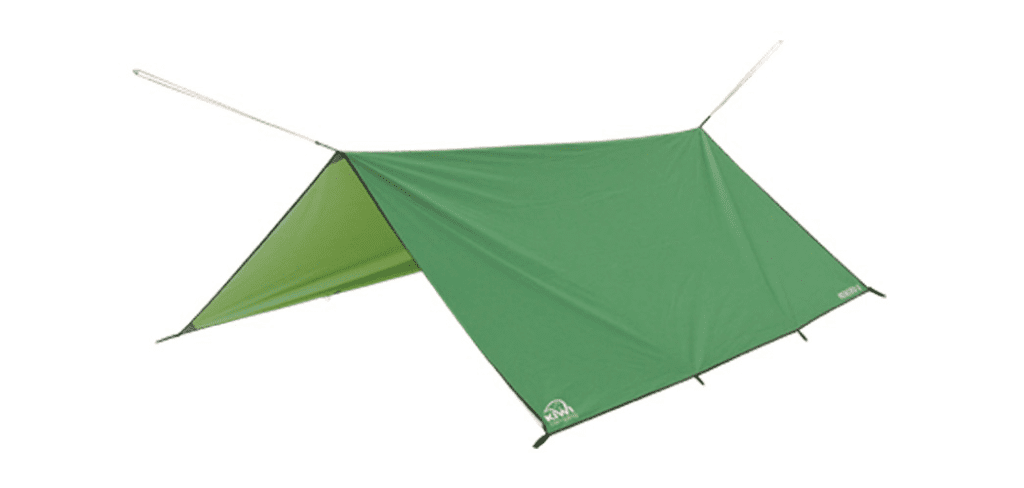When it comes to winter camping, staying warm is crucial. That’s where hot tents come in! A hot tent is a type of camping tent that is designed to accommodate a stove, allowing you to stay warm and cozy even in freezing temperatures. But in order to make the most of your hot tent, it’s important to choose the right material.
And I know – Choosing the best material for your hot tent can be a daunting task, especially if you’re new to camping. After all, there are a variety of materials to choose from, each with its own strengths and weaknesses. But the right material can mean the difference between a comfortable, enjoyable camping experience and a miserable one.
That’s why in this article, we’ll take a closer look at the factors you should consider when choosing hot tent material, as well as the pros and cons of the most common materials used for hot tents. So whether you’re a seasoned winter camper or just getting started, read on to learn more about what material is best for hot tents.
What is the Best Material For a Hot Tent?
Canvas is considered the best material for hot tents due to its durability, breathability, and insulation properties. While it may be heavier and more expensive than other materials, canvas hot tents provide superior protection against the elements and can last for years with proper care.
Other materials such as nylon, polyester, and Gore-Tex can also be suitable for hot tents, depending on your camping needs and preferences. Let’s take a deeper dive to help ensure you’ll make an educated decision.
Factors to Consider When Choosing Hot Tent Material
When it comes to choosing the right material for your hot tent, there are several factors to consider. These factors can have a big impact on your comfort and safety while camping in cold weather. Here are some of the most important factors to keep in mind when choosing hot tent material:
1. Durability
Hot tents need to be able to withstand extreme weather conditions, which means that durability is a key factor to consider. Look for materials that are tough and can handle heavy snow loads, high winds, and other elements that you might encounter while camping in winter.
2. Waterproofness
Staying dry is crucial when camping in the winter, so you’ll want to choose a material that is waterproof. Look for fabrics that have a high water-resistant rating, and consider using a seam sealer to help keep moisture out.
3. Breathability
While it’s important to keep the cold air out of your hot tent, you also need to ensure that there is proper ventilation to prevent condensation buildup. Look for materials that are breathable, and consider adding vents or windows to your tent if necessary.
4. Insulation
The right material can also help to insulate your hot tent and keep you warm. Look for materials that have a high insulation value, and consider using a liner or insulation layer inside your tent to help trap heat.
5. Weight
While durability and insulation are important, you also don’t want to carry a heavy tent around with you. Look for materials that are lightweight and easy to transport, without sacrificing durability or other important factors.
6. Cost
Finally, consider your budget when choosing hot tent material. While some materials may be more expensive than others, it’s important to find a balance between cost and performance to ensure that you get the best value for your money.
By considering these factors when choosing hot tent material, you can ensure that you select a material that will keep you warm, dry, and comfortable while camping in cold weather. Next, we’ll take a closer look at some of the most common materials used for hot tents and their pros and cons.
Related: How To Treat Fabric For Outdoor Use
Hot Tent Materials

Now that you know what factors to consider when choosing hot tent material, let’s take a closer look at the most common materials used for hot tents and their pros and cons.
1. Canvas
Canvas is a popular choice for hot tents, thanks to its durability and ability to retain heat. It’s also a breathable material, which can help prevent condensation buildup. However, canvas can be heavy and expensive, making it a less practical choice for some campers.
2. Nylon
Nylon is a lightweight and affordable material that is commonly used for hot tents. It’s also water-resistant and quick-drying, which can be helpful in wet conditions. However, nylon is not as durable as other materials, and it can be prone to tearing.
3. Polyester
Polyester is another lightweight and affordable option for hot tents. It’s durable and water-resistant, and it’s also less prone to stretching or shrinking than nylon. However, polyester is not as breathable as other materials, which can lead to condensation buildup inside the tent.
4. Gore-Tex
Gore-Tex is a popular material for hot tent outer shells, thanks to its high level of waterproofness and breathability. It’s also lightweight and durable, making it a practical choice for winter camping. However, Gore-Tex can be expensive, and it may not be as effective at retaining heat as other materials.
5. Poly-cotton
Poly-cotton is a blend of polyester and cotton that combines the durability of polyester with the breathability of cotton. It’s also water-resistant and quick-drying, which can be helpful in wet conditions. However, poly-cotton can be heavy and expensive, making it a less practical choice for some campers.
When choosing hot tent material, it’s important to consider the pros and cons of each option and find a material that best meets your needs and preferences.
Comparison of Hot Tent Materials
Now that you have a good understanding of the different types of hot tent materials available, it’s time to compare them and see how they stack up against each other. Here’s a breakdown of the pros and cons of each material:
1. Canvas vs. Nylon
Canvas is heavier and more expensive than nylon, but it’s also more durable and better at retaining heat. Nylon is lighter and more affordable, but it’s not as durable and can be prone to tearing. Ultimately, the choice between canvas and nylon comes down to your camping needs and preferences.
2. Nylon vs. Polyester
Nylon is lightweight and quick-drying, but it’s not as durable as polyester and can be prone to tearing. Polyester is more durable and less prone to stretching or shrinking, but it’s not as breathable as nylon and can lead to condensation buildup inside the tent.
3. Polyester vs. Gore-Tex
Polyester is affordable and durable, but it’s not as breathable as Gore-Tex and can lead to condensation buildup inside the tent. Gore-Tex is more expensive, but it’s highly waterproof and breathable, making it a great choice for winter camping.
4. Gore-Tex vs. Poly-cotton
Gore-Tex is highly waterproof and breathable, but it can be expensive and may not be as effective at retaining heat as poly-cotton. Poly-cotton is a blend of polyester and cotton that is durable, breathable, and water-resistant, but it can be heavy and expensive.
Ultimately, the best hot tent material for you will depend on a variety of factors, including your camping needs, preferences, and budget.
Other Considerations When Choosing a Hot Tent Material
While the type of material used in a hot tent is certainly an important factor to consider, there are also other important considerations to keep in mind when selecting the right tent for your needs. Here are a few additional things to think about:
1. Tent Size
The size of your hot tent will depend on the number of people you plan to accommodate, as well as the amount of gear you need to store. Keep in mind that larger tents may require more insulation and may not retain heat as well as smaller tents.
2. Insulation
In addition to the type of material used, the amount and quality of insulation in your hot tent will also affect its ability to retain heat. Look for tents with high-quality insulation, such as synthetic or down fill, and make sure the tent is properly designed to trap warm air inside.
3. Ventilation
While it’s important to keep warm air inside your hot tent, it’s also important to allow for proper ventilation to prevent condensation buildup and ensure good air quality. Look for tents with multiple windows and vents that can be opened and closed as needed.
4. Weight and Portability
Depending on your camping style, the weight and portability of your hot tent may be important considerations. Look for lightweight materials and tents that can be easily packed and transported, especially if you plan to do a lot of winter camping in remote areas.
5. Price
Finally, it’s important to consider your budget when selecting a hot tent material. While high-quality materials like canvas and Gore-Tex can be expensive, they may be worth the investment if you plan to use your tent frequently and in extreme conditions.
On the other hand, more affordable materials like nylon and polyester may be a better choice if you’re on a tight budget or only plan to use your tent occasionally.
Final Thoughts – What Material Is Best For hot Tent?
Canvas is the best material for hot tents because of its durability, breathability, and insulation properties. It’s also a natural material that provides a classic, rustic look and feel to your camping setup. While it may be heavier and more expensive than other materials, canvas hot tents offer superior protection against the elements and can last for years with proper care.
As we discussed, there are additional options for hot tent materials, including nylon, polyester, Gore-Tex, and other specialty fabrics. Each material has its own unique benefits and drawbacks, so it’s important to consider how you plan to use your tent and what type of camping you’ll be doing when making your selection.
